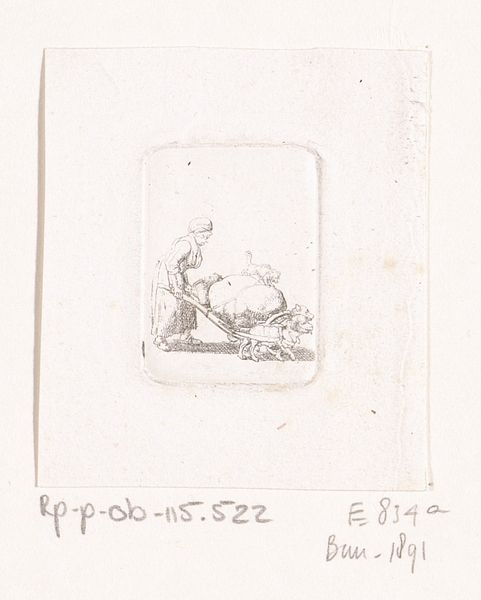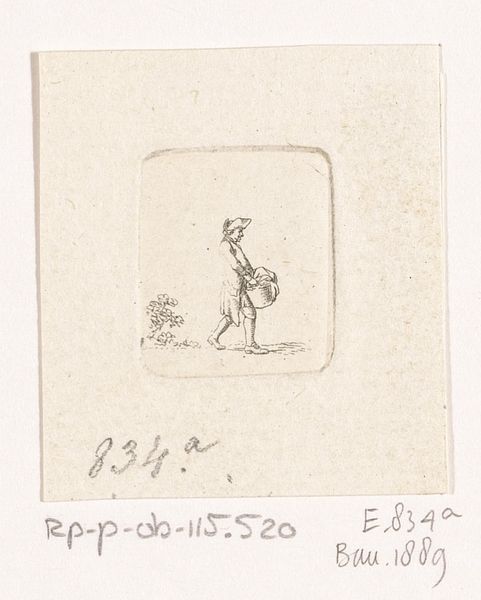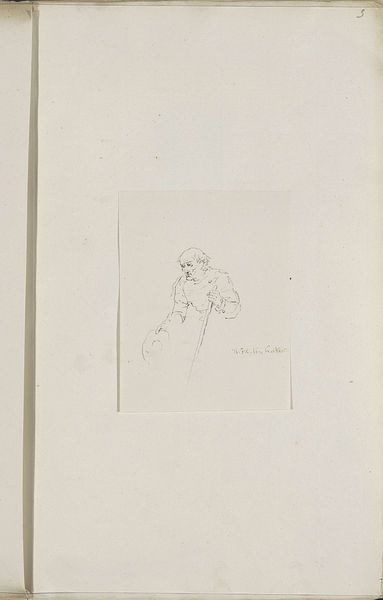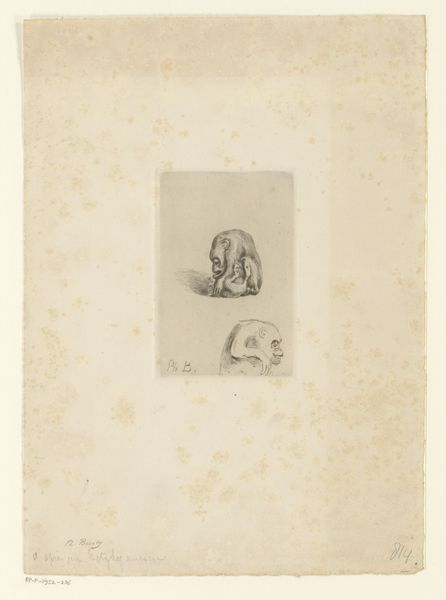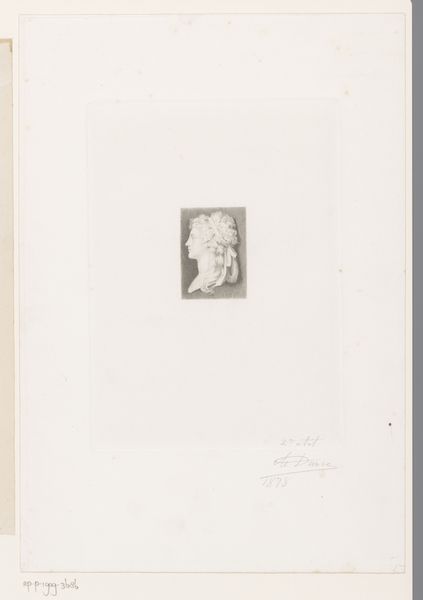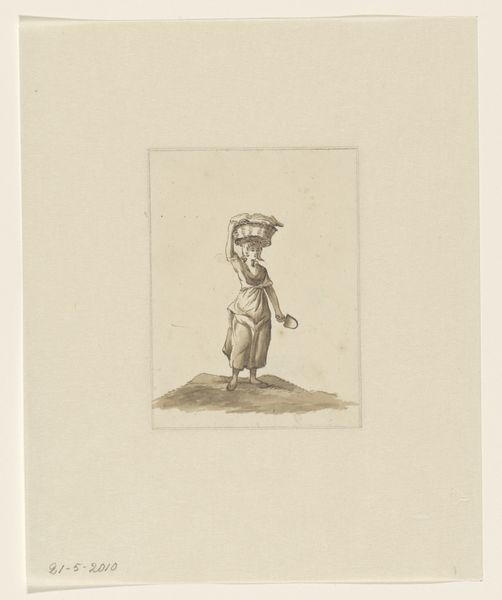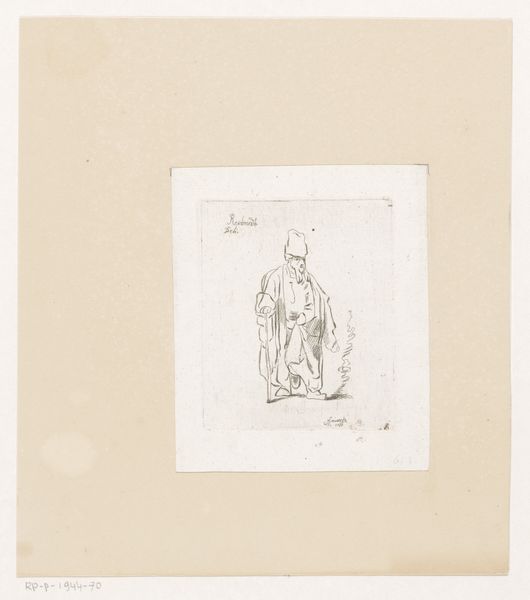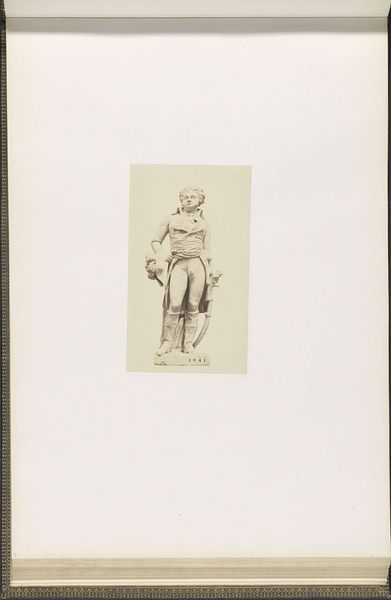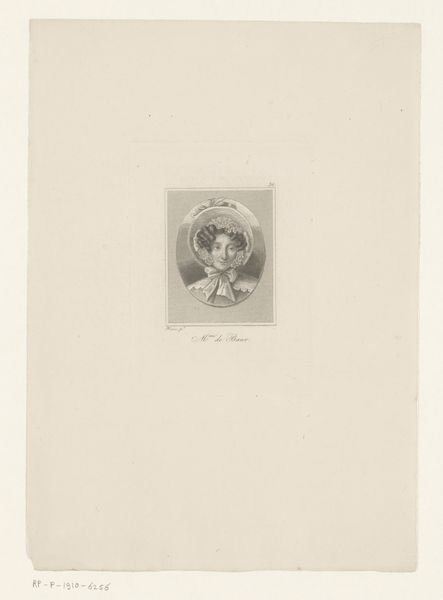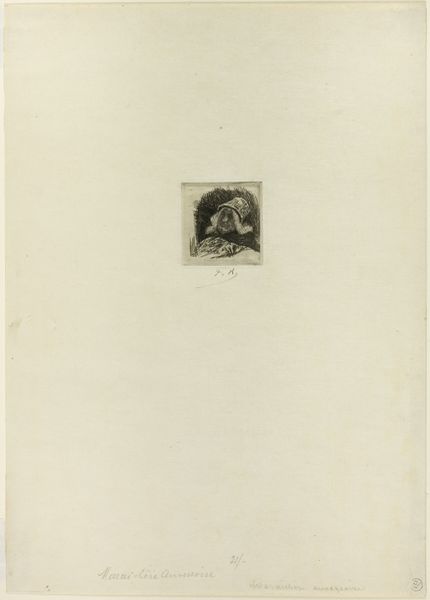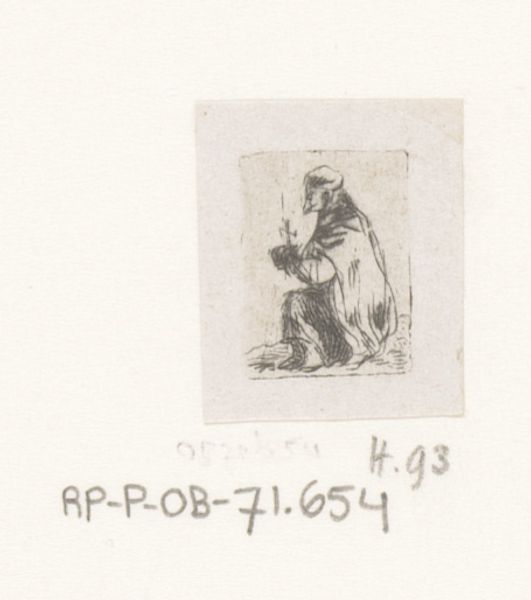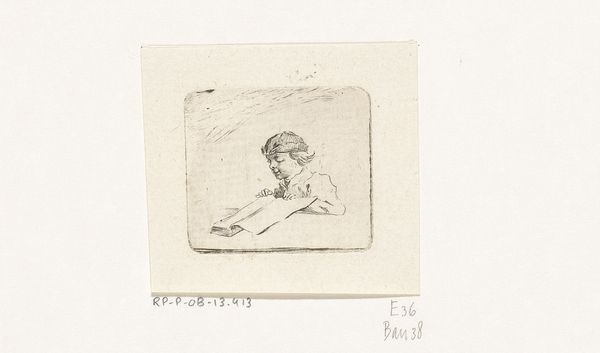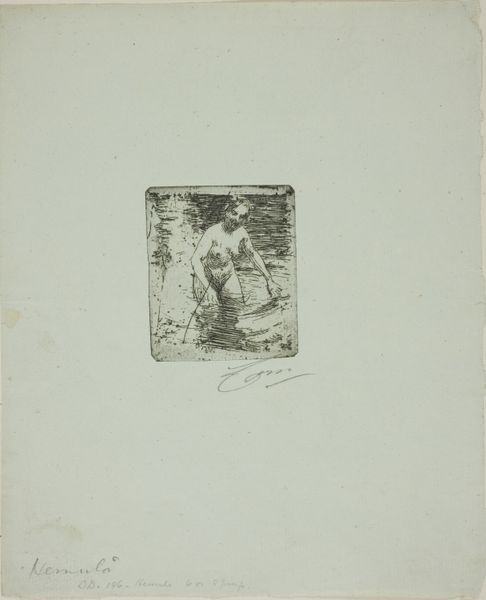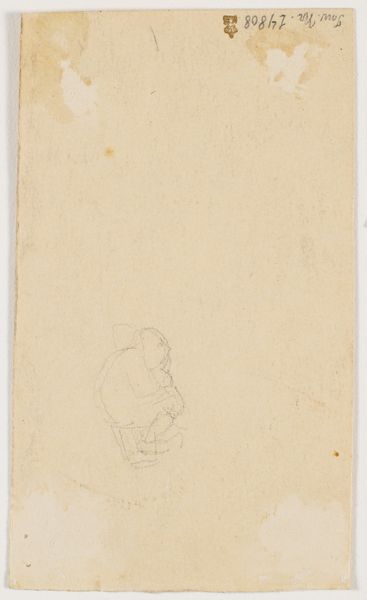
print, etching
# print
#
etching
#
etching
#
figuration
#
romanticism
#
history-painting
Dimensions: height 25 mm, width 21 mm
Copyright: Rijks Museum: Open Domain
Curator: This etching by Daniel Nikolaus Chodowiecki, created in 1796, is titled "Vluchtende vrouw met zak op haar rug" or "Fleeing woman with a bag on her back." Editor: Immediately, I notice the vulnerability captured in the line work. The figure is quite small in the frame, isolated. There’s a starkness to the composition. Curator: Chodowiecki was a master printmaker. Observe how the delicate etching creates textures. Notice how the subject of the art becomes about ordinary individuals experiencing the turbulence of revolution. The artist has an eye to the realities faced by women. Editor: You’re right, there’s a focus on materiality. Look at how he renders her clothing with simple, decisive lines. It gives shape to a story about a specific person rather than just representing "a woman." Curator: Absolutely. He used etching, a relatively accessible method of printmaking, to create multiples. Art could then be accessed beyond aristocratic circles, spreading ideas and illustrating societal shifts. Editor: How fascinating! Considering the printmaking process itself, it highlights both access and constraints in image-making at this time. But, coming back to form, that stark white space against the fine lines makes her even more vulnerable, doesn’t it? Curator: Indeed. This use of negative space accentuates the woman's isolation. Perhaps emphasizing the socio-economic conditions that lead to someone being so unsupported. Editor: It gives the composition emotional power, that's for sure. I'm now understanding the process better; seeing the materials and historical forces behind the image truly enhance what I get from Chodowiecki's imagery. Curator: Considering its history and artistic choices reveals new dimensions to "Vluchtende vrouw." It asks us to look past simply admiring the subject, and rather asking, 'how' and 'why'. Editor: Agreed. Looking at the details of both her formal presentation, and materials that constructed its representation gives me a deeper reading of Chodowiecki's time.
Comments
No comments
Be the first to comment and join the conversation on the ultimate creative platform.
